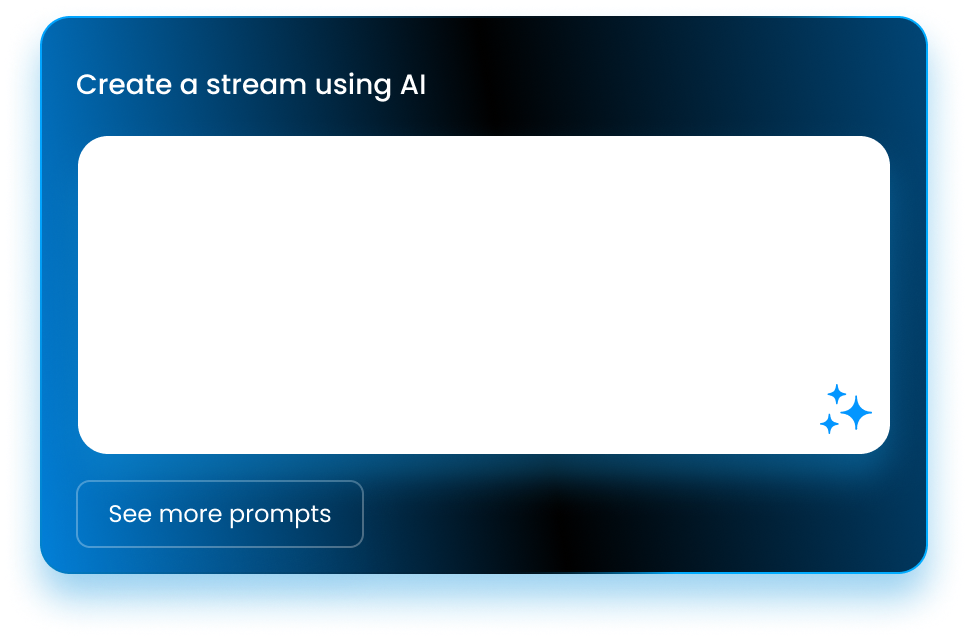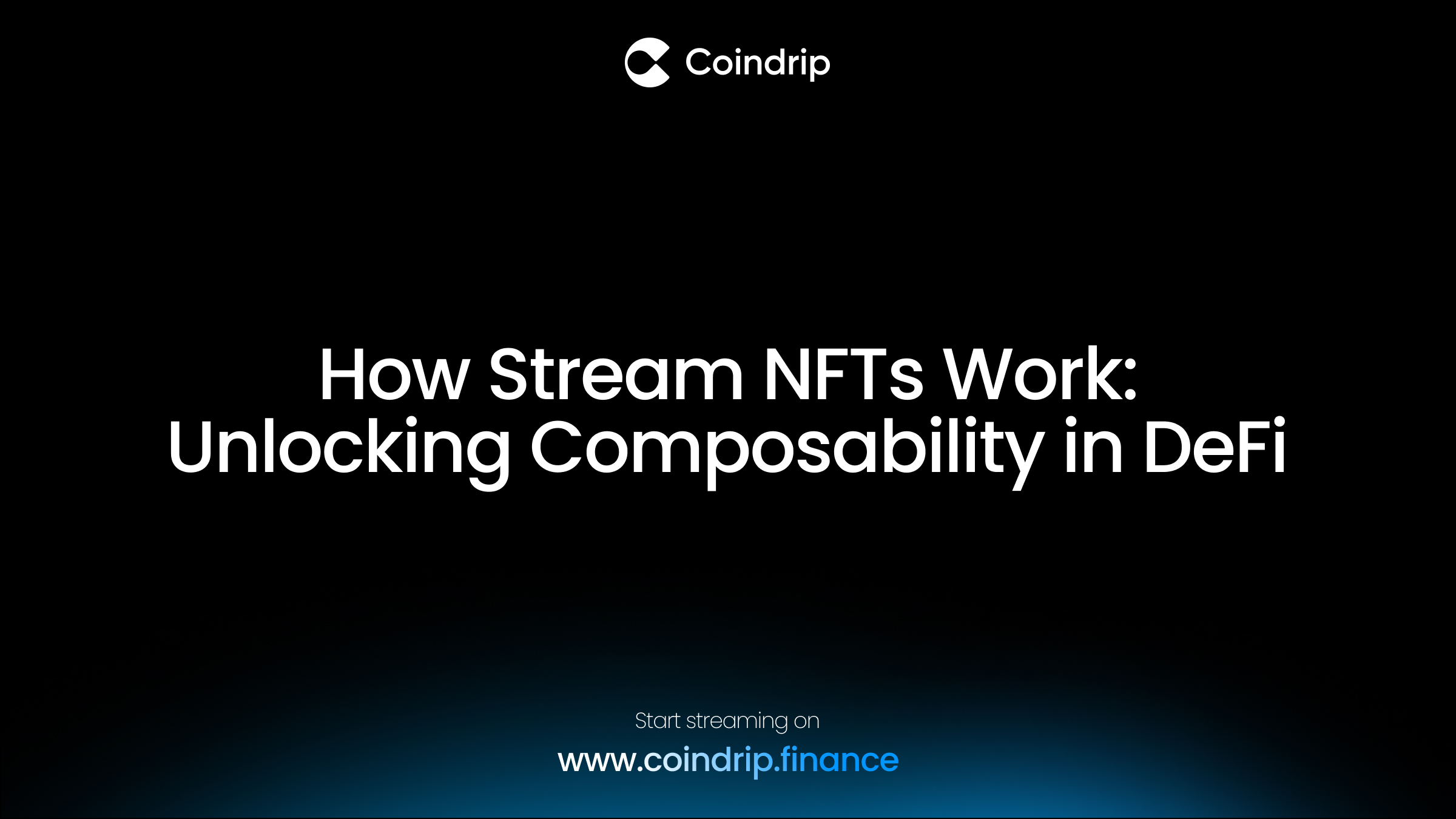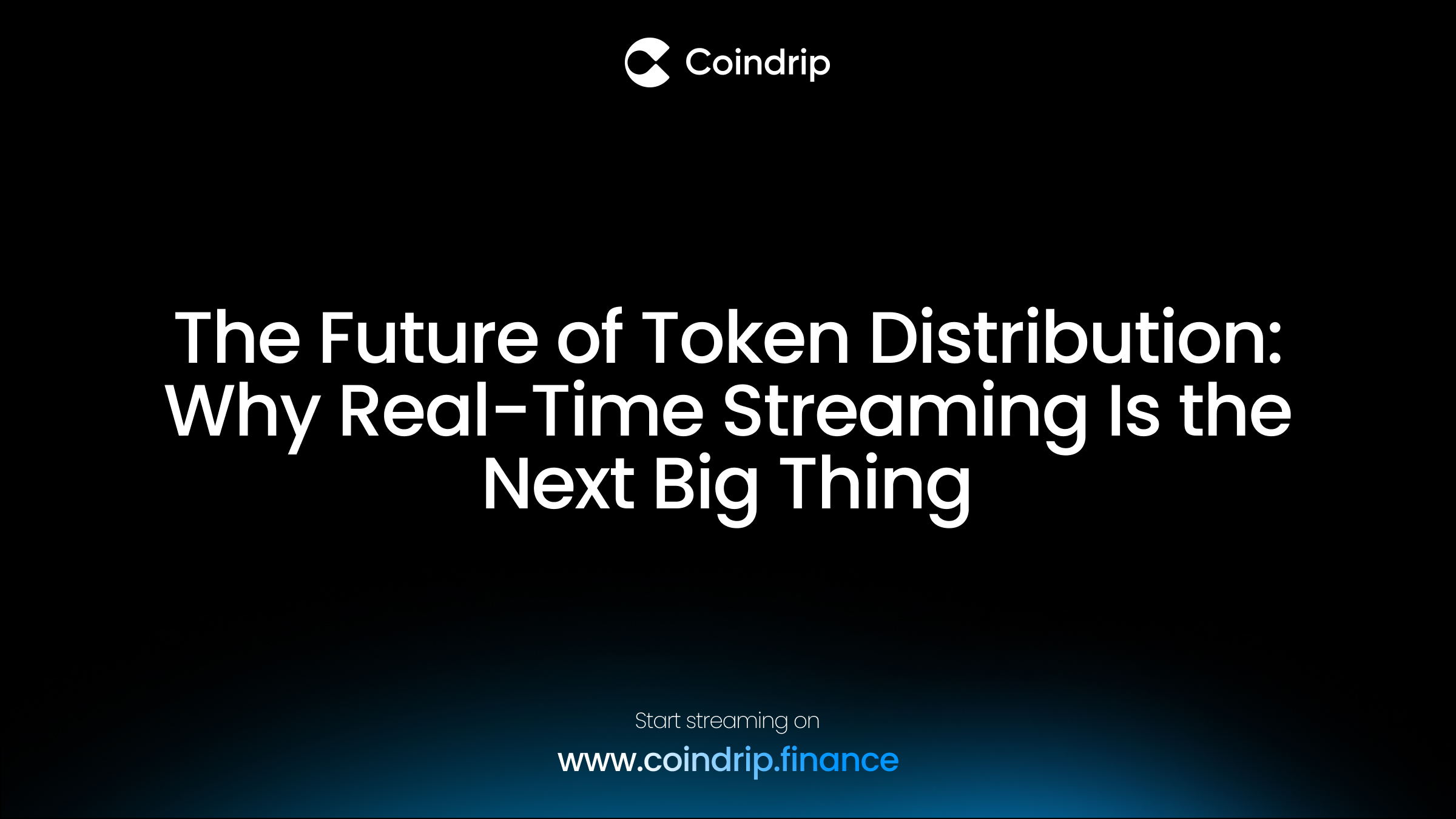The protocol for
real-time
|
Distribute, collect, and access funds instantly, empowering the financial flexibility needed for a dynamic and rapidly evolving world.


Coindrip for?
As a Project
or DAO
Organizations use CoinDrip to create flexible and programmable token streams—whether linear, cliff-based, or custom—allowing for transparent and automated payouts. With deep DeFi composability, even locked tokens can be utilized for yield generation, liquidity provision, or flash-loan collateral without disrupting the vesting schedule.
As a recipient
Users benefit from full transparency and control. Each token stream is represented by an NFT, which can be traded, borrowed against, or integrated into DeFi protocols. This enables real-time access to vested tokens, passive yield on locked funds, and opportunities for flash-loan borrowing.


Distribution Models.
CoinDrip gives projects total freedom to shape how tokens unlock—linear, cliffs, monthly, or any curve you can dream up. No more one-size-fits-all vesting. This is token distribution as it should be: fully programmable, deeply flexible, and built to match your vision.
token distribution.
Coindrip intelligently automates the creation of onchain payments and token distribution, adapting to your workflows and business logic. From complex vesting schedules to dynamic payroll systems, our AI ensures precision, compliance, and efficiency—at scale.

NFTs
Each stream gives the recipient an NFT that represents their incoming tokens and grants full control—enabling them to trade, borrow, or use it across DeFi.
Real-time claim
Payments shouldn't be static. With CoinDrip your tokens unlock each second and you can withdraw them whenever you want.
Generate Yield
With CoinDrip, vesting is an opportunity—not downtime. Locked tokens stay secure but can still earn yield and power DeFi strategies. Locked, but alive.
Flash loans
CoinDrip let users tap into locked funds via flash loans, enabling liquidity without disrupting vesting.
Coindrip is compatible with any token like |
Its innovative architecture leverages parallel transaction execution and a unique consensus mechanism, allowing it to achieve near-instant finality. This makes Sui ideal for applications requiring high throughput and low latency, such as gaming, DeFi, and real-time data processing.

By optimizing resource usage and minimizing computational overhead, the blockchain keeps gas costs predictable and affordable, even during peak network activity. This affordability empowers a wide range of use cases, like microtransactions, without the burden of escalating expenses.
If you can't find what you're looking for, email or DM us and we'll get back to you.
How does token streaming works?
You define an amount of tokens to be distributed in a specific time period. During that period, tokens unlock each second and the recipient is able to claim them whenever he wants.
Example
Let's say you want to send 2000 USDC to John from 1 Jan to 1 Feb. You'll create the stream with all these details. John's funds will start to unlock from 1 Jan, each second. For example, on 15 Jan John will be able to claim half of his funds.
How can I start streaming tokens?
You need to connect your wallet on Coindrip, click on the Create Stream button, fill in the recipient, amount of tokens and the duration, click the button and sign the transaction. That's it!
Can I cancel a stream?
Yes, the recipient can cancel a stream at any time if the stream was not marked as non-cancellable by the sender during creation. If the stream is canceled before the start time, all funds are returned to the sender. If you cancel the stream after the start time, but before the end time, the amount that was stream so far is transferred to the recipient and the remaining tokens come back to your wallet. If the stream is canceled after the end time, all funds are transferred to the recipient.
Can I edit a stream?
No, streams are not editable. After it was created, you can only cancel it based on the above conditions.
How does stream NFTs work?
Each stream recipient is minted an NFT when a stream is created. Whoever the owner of that NFT is, has full access to withdraw funds from that stream. Once that NFT is transferred or sold to another wallet, the new wallet has full access to the funds, including the stream but not claimed ones.
What are the possible use-cases of Coindrip?
The possibilities are endless but some of the use-cases we identified might be: recurring payments, token vesting, payroll, airdrops, grants or subscriptions.
Is the Coindrip protocol decentralized?
Yes, all the transactions are public on the blockchain, and anyone can come and interact directly with the smart contract or through another interface. Also, the entire code base is open-source for everyone to check or submit improvements.









